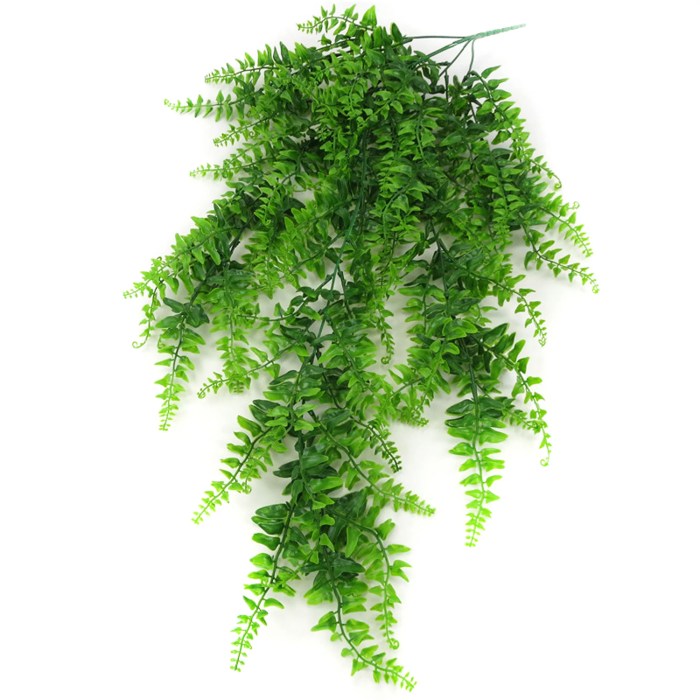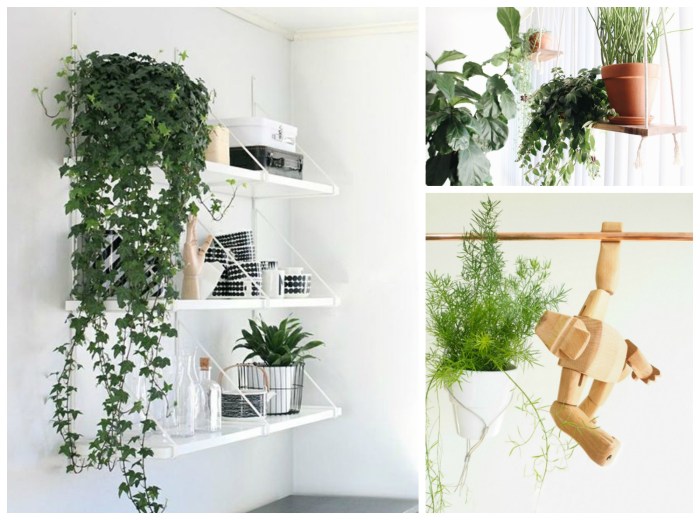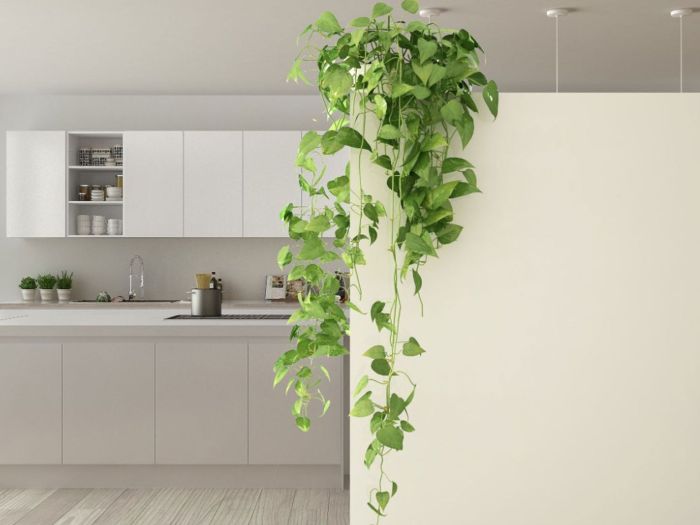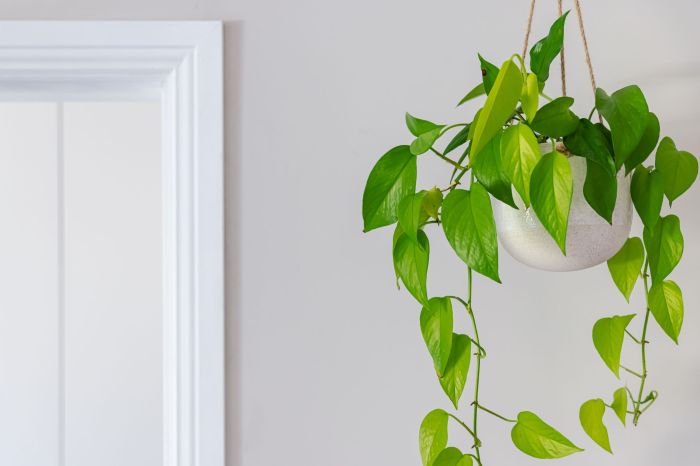Unleash the beauty of nature indoors with the 6 best indoor hanging vines. These captivating plants bring life and vitality to any space, transforming your home into a verdant oasis. From trailing tendrils to cascading foliage, discover the perfect vine to complement your decor and create a stunning visual impact.
Whether you’re seeking a lush backdrop for your living room or a touch of greenery to brighten your kitchen, these vines offer a versatile solution that caters to every need.
Indoor Hanging Vines: 6 Best Indoor Hanging Vines

Indoor hanging vines have become increasingly popular due to their ability to add a touch of greenery and freshness to any space. They can help purify the air, reduce stress, and create a sense of tranquility. There are many different types of indoor hanging vines, each with its own unique characteristics.
Types of Indoor Hanging Vines
Some of the most popular types of indoor hanging vines include:
- English Ivy:A classic choice for indoor hanging vines, English Ivy is known for its trailing stems and glossy green leaves.
- Pothos:Also known as Devil’s Ivy, Pothos is a low-maintenance vine that is tolerant of a wide range of light conditions.
- Spider Plant:Spider Plants are known for their long, arching stems and variegated leaves.
- String of Hearts:A unique and eye-catching vine, String of Hearts has heart-shaped leaves that trail down from its stems.
- Burro’s Tail:Burro’s Tail is a succulent vine with plump, fleshy leaves that resemble a donkey’s tail.
Choosing the Right Indoor Hanging Vines

Selecting the ideal indoor hanging vines involves considering factors such as lighting conditions, humidity levels, and available space.
Light Conditions
-
-*Low-light vines
Choose species like English ivy or pothos, which thrive in shaded areas.
-*Medium-light vines
Consider varieties like arrowhead plant or spider plant, suitable for rooms with indirect sunlight.
-*High-light vines
Opt for vines like morning glory or passionflower, which require ample direct sunlight.
Humidity Levels
-
-*High-humidity vines
Select species like ferns or maidenhair vines, which prefer humid environments.
-*Low-humidity vines
For those seeking to bring a touch of nature indoors, consider the 6 best indoor hanging vines. These lush plants, such as the pothos, spider plant, and string of pearls, create a cascading effect that adds visual interest to any room.
To further elevate your indoor greenery, explore Decorative Hanging Planters for Indoor Spaces: Enhance Your Home with Greenery . This comprehensive guide offers tips and inspiration for selecting the perfect planters to complement your hanging vines, creating a harmonious and captivating indoor oasis.
Choose drought-tolerant vines like succulents or hoyas, which can withstand drier conditions.
Space Considerations
-
-*Small spaces
For those looking to incorporate lush greenery into their indoor spaces, consider the six best indoor hanging vines. These trailing plants, such as the String of Hearts, add a touch of elegance and natural beauty. For more inspiration on creating a verdant indoor oasis, explore Decorative Indoor Plant Hangers: A Guide to Adding Style and Greenery to Your Home , which offers a comprehensive guide to choosing and styling hanging plants.
Discover how these versatile vines can transform your home into a botanical sanctuary, bringing the outdoors in.
Compact vines like string of pearls or peperomia are ideal for limited areas.
-*Large spaces
Trailing vines like ivy or philodendron can fill larger spaces and create a lush ambiance.
Care and Maintenance of Indoor Hanging Vines

Nurturing indoor hanging vines requires proper care and maintenance to ensure their vitality and aesthetic appeal. This involves adhering to optimal watering, lighting, and fertilizing practices, as well as implementing regular pruning and propagation techniques. Additionally, understanding common pests and diseases that can affect these plants is crucial for effective management.
Watering
Watering indoor hanging vines should be done thoroughly when the soil feels dry to the touch. Avoid overwatering, as it can lead to root rot. The frequency of watering depends on factors such as the size of the plant, the type of soil, and the environmental conditions.
During the growing season (spring and summer), vines may require more frequent watering, while during the dormant season (fall and winter), they may need less.
Lighting
Most indoor hanging vines prefer bright, indirect light. However, some varieties, such as the Golden Pothos, can tolerate low light conditions. Direct sunlight should be avoided, as it can scorch the leaves.
Fertilizing, 6 best indoor hanging vines
Fertilizing indoor hanging vines every two to four weeks during the growing season can help promote healthy growth and foliage. Use a balanced liquid fertilizer diluted to half strength.
Pruning and Propagation
Pruning indoor hanging vines helps control their growth and shape. Remove any dead, damaged, or diseased leaves or stems. Vines can also be propagated by taking cuttings and rooting them in water or soil.
Common Pests and Diseases
Common pests that can affect indoor hanging vines include aphids, mealybugs, and spider mites. These pests can be managed using insecticidal soap or neem oil. Common diseases include powdery mildew and root rot. Powdery mildew can be treated with a fungicide, while root rot can be prevented by avoiding overwatering.
Creative Display Ideas for Indoor Hanging Vines

Showcase your indoor hanging vines with innovative and visually appealing displays. Experiment with trellises, macrame hangers, and other structures to support and enhance their growth. These creative ideas will inspire you to incorporate hanging vines seamlessly into your home decor.
For those seeking a touch of nature indoors, consider incorporating hanging vines. Whether it’s the trailing leaves of a pothos or the delicate tendrils of a string of pearls, these vines can create a cascading effect that adds life and movement to any room.
With a wide variety to choose from, including spider plants, hoyas, and philodendrons, there’s a perfect vine for every space. Visit Hanging to discover the 6 best indoor hanging vines that will transform your home into a lush oasis.
Vertical Trellises
Vertical trellises provide a structured support system for vines to climb, creating a lush vertical garden effect. Choose trellises with intricate designs or natural materials like wood or bamboo to complement your home’s style.
Macrame Hangers
Macrame hangers add a bohemian touch to your indoor hanging vines. These intricately knotted hangers create a unique and eye-catching display, showcasing the vines’ cascading foliage.
Hanging Planters
Hanging planters offer a versatile way to display hanging vines. Suspend them from the ceiling or mount them on walls to create a layered effect. Choose planters with drainage holes to prevent waterlogging and promote healthy vine growth.
Wall-Mounted Trellises
Wall-mounted trellises are a space-saving solution for displaying hanging vines. They can be installed on any wall surface and provide a vertical support structure for vines to climb. This option is ideal for smaller spaces or rooms with limited floor space.
Six Best Indoor Hanging Vines

Bring life and lush greenery to your indoor spaces with the best hanging vines. These plants are not only aesthetically pleasing but also offer air-purifying benefits, creating a healthier indoor environment.
Best Indoor Hanging Vines
| Vine Name | Scientific Name | Key Characteristics | Care Requirements |
|---|---|---|---|
| Spider Plant | Chlorophytum comosum | – Long, variegated leaves with white or yellow stripes
| – Prefers bright, indirect light
|
| Golden Pothos | Epipremnum aureum | – Heart-shaped, golden-green leaves
| – Tolerates low light conditions
|
| Devil’s Ivy | Epipremnum aureum ‘Marble Queen’ | – Variegated leaves with white, cream, and green patterns For those seeking to add a touch of greenery to their indoor spaces, consider the allure of hanging vines. From the cascading tendrils of English Ivy to the delicate fronds of String of Hearts, the 6 best indoor hanging vines offer a diverse array of textures and colors. Their ability to purify air and create a sense of tranquility makes them ideal for any home. Explore more types of indoor hanging plants in our comprehensive guide: Different Types of Indoor Hanging Plants: Beautify Your Home with Nature’ , and discover how these versatile plants can transform your living space into a vibrant oasis.
| – Prefers bright, indirect light
|
| String of Pearls | Senecio rowleyanus | – Delicate, bead-like leaves that resemble pearls
| – Prefers bright, indirect light
|
| Heartleaf Philodendron | Philodendron scandens | – Heart-shaped, glossy green leaves
| – Prefers bright, indirect light
|
| Arrowhead Plant | Syngonium podophyllum | – Arrow-shaped, variegated leaves with white, pink, or green patterns
| – Prefers bright, indirect light
|
Final Summary

With their ability to purify air, reduce stress, and create a sense of tranquility, these indoor hanging vines are not just decorative additions but also bring tangible benefits to your well-being. Embrace the beauty of nature and transform your home into a sanctuary of greenery with these exceptional vines.
General Inquiries
What are the benefits of indoor hanging vines?
Indoor hanging vines offer numerous benefits, including air purification, stress reduction, and a sense of tranquility. They also add a touch of greenery and life to any space, enhancing the overall ambiance.
How do I choose the right indoor hanging vine for my home?
Consider factors such as the amount of light, humidity, and space available in the room where you plan to hang the vine. Different vines have different needs, so it’s important to select one that will thrive in your specific environment.
How do I care for indoor hanging vines?
Caring for indoor hanging vines is relatively easy. Provide them with adequate watering, light, and occasional fertilizing. Regular pruning and propagation will help maintain their health and appearance.